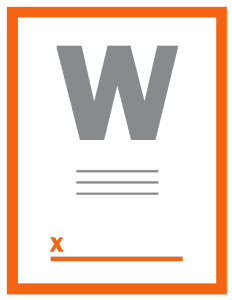 A few days ago, UnitedHealthcare announced that the possibility of withdrawing from the Obamacare health insurance exchanges. This is a significant announcement, as UnitedHealthcare is one of the biggest insurers in the country. The impact of withdrawl would affect hundreds of thousands of people with regard to their healthplans; the timing — right before 2016 elections — would be critical.
A few days ago, UnitedHealthcare announced that the possibility of withdrawing from the Obamacare health insurance exchanges. This is a significant announcement, as UnitedHealthcare is one of the biggest insurers in the country. The impact of withdrawl would affect hundreds of thousands of people with regard to their healthplans; the timing — right before 2016 elections — would be critical.
HHS is predicting 10 million enrollees in 2016, which is half of what was originally projected when Obamacare was passed. It’s unlikely that enrollment will suddenly surge this year, which means that the financial instability of the entire model will continue.
If UnitedHealthcare decides to discontinue next year, those with their coverage will have to — yet again — choose another plan, but this time from a smaller list of coverage providers. Since Open Enrollment begins in the fall, right around Election time, such a move could wreak havoc on the final stretch.
One economist suggests that prices will increase even more.
“The year 2017 is significant for insurers, because that’s the year when several programs designed to mitigate risk for insurers through federal backstops go away. The hope was that those programs would act as training wheels for Obamacare in its first few years of implementation, but after that, the insurers were supposed to be able to thrive on their own. UnitedHealth’s statement suggests otherwise.
If UnitedHealth and other insurers decide to exit, remaining insurers will be forced to take on even more high-risk enrollees, prompting them to either raise rates further or exit themselves. That in turn would deprive individuals of choices and remove competition, a key purpose of the exchanges.”
So don’t expect United to suddenly see a reason to get back into the 2017 market, not without hefty risk-corridor subsidies — which under any other circumstances would be called “corporate welfare.” Given that Congress isn’t likely to reverse course and underwrite ObamaCare losses, the path to the exit remains the likely course for United, and perhaps some of its competitors, too.
United says it will remain committed to its Medicaid and Medicare businesses, and of course it will stick with its employer-based group coverage, where the issues of ObamaCare regulation have less impact.”
“But UnitedHealth and other insurers need more Americans to come into the public exchanges because the patients that are signing up for coverage are sicker, making a “higher overall risk pool,” insurance executives say. It’s a key reason many Americans are seeing rate increases of 10 percent or more across the country on public exchanges.
United has discovered that the trade-offs in mandates and forced coverage don’t pay off. It’s a bait-and-switch for insurers by the Obama administration, but it’s even worse of a bait-and-switch for consumers.
Subsidies do not mitigate the fact that consumers have to pay both the premium and then thousands of dollars for care out of their own pocket before insurance takes effect, except in rare and catastrophic circumstances.
Consumers used to have an option for that kind of health insurance – catastrophic coverage, used to indemnify against unforeseen major health events. Those policies featured low premiums and left routine care for consumers to negotiate directly with providers on a cash basis. Combined with health-savings accounts (HSAs), those plans offered a rational approach to balancing health and economic requirements, especially for younger consumers who rarely need more than one or two clinic visits a year, which would cost far less than either comprehensive-coverage premiums or deductibles even in the pre-ACA era.
Instead of “affordable care” promised by President Obama and Democrats, consumers have instead discovered they have effectively been forced to pay for catastrophic health insurance at comprehensive-plan prices. They have become victims of a bait-and-switch scheme that the government would vigorously prosecute – if it wasn’t masterminding the scheme itself.”